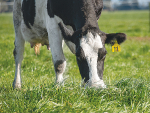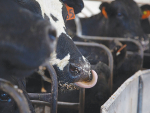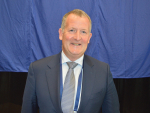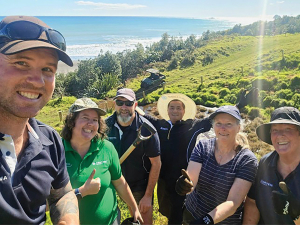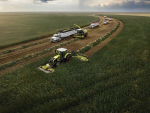Because of this there is a wide variation in heifer size, condition and capaciousness, it is sometimes difficult to see issues unless absolutely obvious. When it comes to appearance of R2’s, ideally by calving your replacements should be almost as tall as the mature cows in the herd and not looking like yearlings. One giveaway observation is seeing R2’s with a disproportionately bigger heads relative to their frame.
So, If you’re not happy with how your R2’s look, or even just want to ensure you have all bases covered, here are some basic pointers to help get you ‘back on track’ prior to calving.
Feed selection – When heifers arrive home in poor condition, the tendency is to throw more concentrated feeds (Meal & PKE) at them with the idea of driving rapid weight gain.
In these situations, don’t make the mistake of not providing effective fibre (mature pasture, silage and hay). Weight gain achieved quickly without attempting to develop the rumen will predispose the heifer to rapid weight loss post calving leading to Ketosis and associated losses post calving
Parasites – Autumn/early winter coincides with peak numbers of infective larvae on the pastures. Younger stock including R2’s have not had sufficient opportunity to develop sufficient immunity to ‘worms’ and as a result are at much higher risk of harbouring infection that reduces growth rates (damaged gut from parasites lessens absorption of nutrients and ‘leaks’ protein that could be used for growth). Ensure these animals are treated regularly with products with proven results in dairy cattle (such as Eprinex)
Minerals – Copper is essential for growing Dairy cattle and almost always lacking in animals returning home. Ensure copper, B12 & selenium treatments are administered prior to calving
Behaviour adaption – Heifers are at the greatest risk of losing weight post calving. In an attempt to minimise this it is best to introduce the heifer to environments (milking shed/fFeed pad), feeds (Maize silage/meal blends) and animals (Bossy cows) prior to them calving and entering the herd.
Remember, if your heifers look disappointing – you still have an opportunity to improve their performance with focus and TLC! Because ‘a stitch in time saves nine’, talk to your animal health professional today if you are concerned and make a plan.
• Greg Jarratt is a vet and director of Matamata Veterinary Services.
This article is brought to you by J. Swap Stockfoods.


